Schools block funding formulae 2021 to 2022
Published 17 June 2021
Applies to England
1. Summary
This guidance provides a summary of the local funding formulae submitted by each local authority to the Education and Skills Funding Agency (ESFA) in January 2021. The local formulae specify how each local authority has allocated their dedicated schools grant (DSG) schools block funding for 2021 to 2022. It provides charts and brief commentary on the ranges of unit funding amounts authorities have selected in 2021 to 2022, and the proportions of schools block funding distributed under each of the permitted factors.
There is an accompanying data file, which is explained in the section Information about the data file spreadsheet. Small details of funding formulae may change subsequently compared to the figures presented here as a result of late amendments.
Note that in the charts shown throughout the document the range of values along the x-axis include the value at the lower end and exclude the maximum value. So, for example, a band labelled 4% to 6% will include values of exactly 4% but will exclude values of exactly 6%. The charts are colour coded throughout the document:
- charts showing percentages are black/grey
- all other charts are blue
We also published a summary of local authorities’ funding formulae for 2020 to 2021
1.1 Background
This year was the fourth year of the national funding formula (NFF).
The NFF means that school funding is distributed based on the individual needs and characteristics of every school in the country. Detailed information about the NFF can be found in the Schools block national funding formula: technical note.
For 2021 to 2022, each local authority’s schools block DSG allocation was calculated based on the notional NFF allocations for schools in their area. Local authorities then set their own funding formula in order to distribute their schools block allocation. This guidance provides an overview of the 2021 to 2022 formula factor values chosen by local authorities as of 8 March 2021. For 2021 to 2022, schools are funded using a maximum of 15 factors.
For 2021 to 2022 Northamptonshire local authority restructured to form North Northamptonshire and West Northamptonshire. As a result there are 152 local authorities in 2021 to 2022 compared to 151 in 2020 to 2021.
1.2 Main points
Overall, the data reflects further progress towards the NFF in its fourth year. Local funding formulae in 2021 to 2022 show that a majority of local authorities have moved towards the NFF since its introduction in 2018 to 2019. When allowing for the area cost adjustment (ACA)[footnote 1] it shows that, of 150[footnote 2] local authorities in England, 105 have moved every one of their factor values in their local formulae closer to the NFF over the past 4 years or remained within 1% of NFF values[footnote 3]. Of these, 73 local authorities are now mirroring the NFF funding factors almost exactly.[footnote 4]
Eighty eight local authorities have set their minimum funding guarantee (MFG) to mirror the minimum 2% per-pupil increase in funding provided through the NFF funding floor. The remaining local authorities were required to guarantee at least 0.5% more per pupil, so that all schools will gain in cash terms per pupil compared to 2020 to 2021.
The data also reflects that every single local authority has delivered the minimum per pupil funding levels of £4,180 per pupil for primary schools, and £5,415 per pupil for secondary schools.
1.3 Commentary
This chapter looks at each of the principal formula factors in turn. It sets out:
- the values local authorities have chosen for those factors in their local formulae
- how these have changed from previous years
- where relevant, how they compare to the values in the NFF, as set out in the Schools block national funding formula: technical note
- the proportion of funding allocated through each factor. [footnote 5]
Comparisons to the NFF are not precise, due to the effect of the ACA, which reflects variation in local costs. Individual factor values in the NFF do not include the impact of the ACA, which is applied (at a rate of 1 to 1.18) as a separate element within the overall NFF calculation. By contrast, the values of factors in local authorities’ local formulae implicitly include the effect of the ACA.
2. Basic per-pupil funding
This is a mandatory factor which every local authority must use in their 2021 to 2022 formula. Local authorities are permitted to choose different basic entitlement rates for primary pupils, for key stage 3 (KS3) pupils and for key stage 4 (KS4) pupils; but they must specify a primary basic entitlement of at least £2,000, and key stage 3 and key stage 4 basic entitlement values of at least £3,000.
The majority (86%) of primary amounts selected by local authorities are in the range of £3,000 to £3,500, although there are a few significant outliers of over £4,000. Nineteen of the 20 local authorities with the highest primary amounts are in London. The amounts selected are similar to last year, although the distribution of the primary amounts shows further movement towards the rate of £3,123.
The NFF primary per pupil value increased from £2,857 in 2020 to 2021 to £3,123 in 2021 to 2022 (including funding for the teachers’ pay and pensions grant, which were brought into the NFF in 2021 to 2022). Many LAs that were following the NFF values in 2020 to 2021 have therefore followed this approach in their local formulae in 2021 to 2022, bringing their primary per-pupil value above £3000.
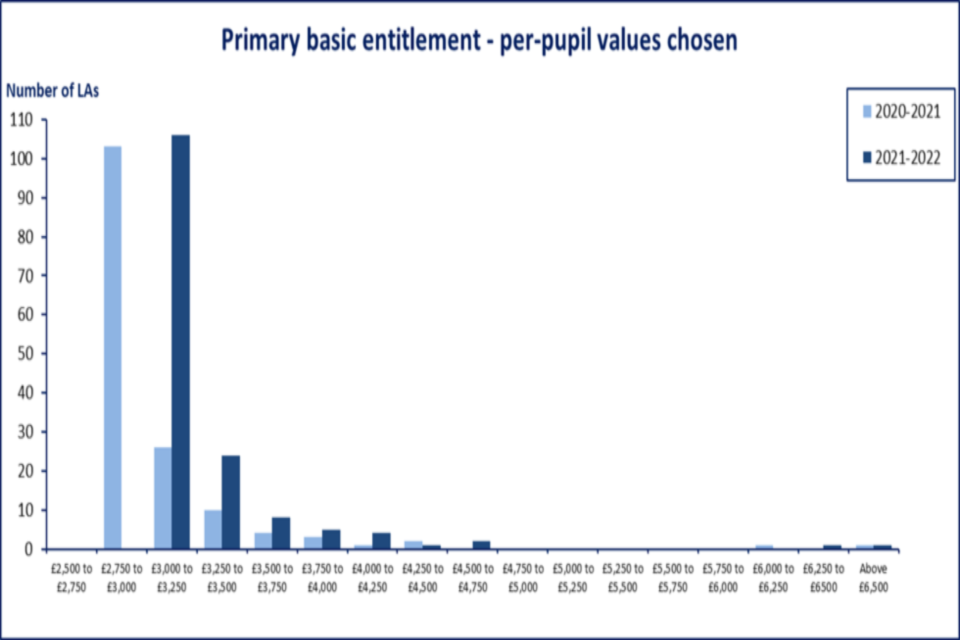
Figure 1: primary basic entitlement
The distribution of the KS3 and KS4 amounts show a move towards the NFF rates of £4,404 and £4,963. For KS3 basic entitlement, 88% of local authorities are allocating between £4,250 and £5,000 per pupil, and for KS4, the majority (84%) are allocating between £4,750 and £5,500 per pupil. Again, the local authorities with the largest secondary basic entitlement amounts are mostly in London.
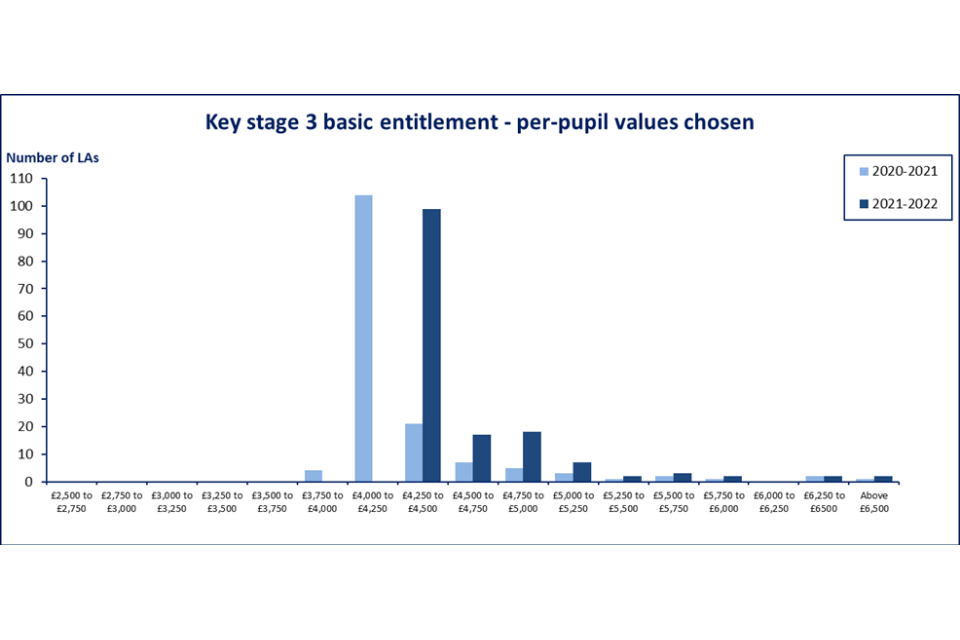
Figure 2: KS3 basic entitlement
The NFF KS3 per pupil value increased from £4,018 in 2020 to 2021 to £4,404 in 2021 to 2022 and for KS4 they increased from £4,561 to £4,963 (including funding for the teachers’ pay and pensions grant, which were brought into the NFF in 2021 to 2022). Many LAs that were following the NFF values in 2020 to 2021 have therefore followed this approach in their local formulae in 2021 to 2022, bringing their primary per-pupil value above £4,250 for KS3 and £4,750 for KS4.
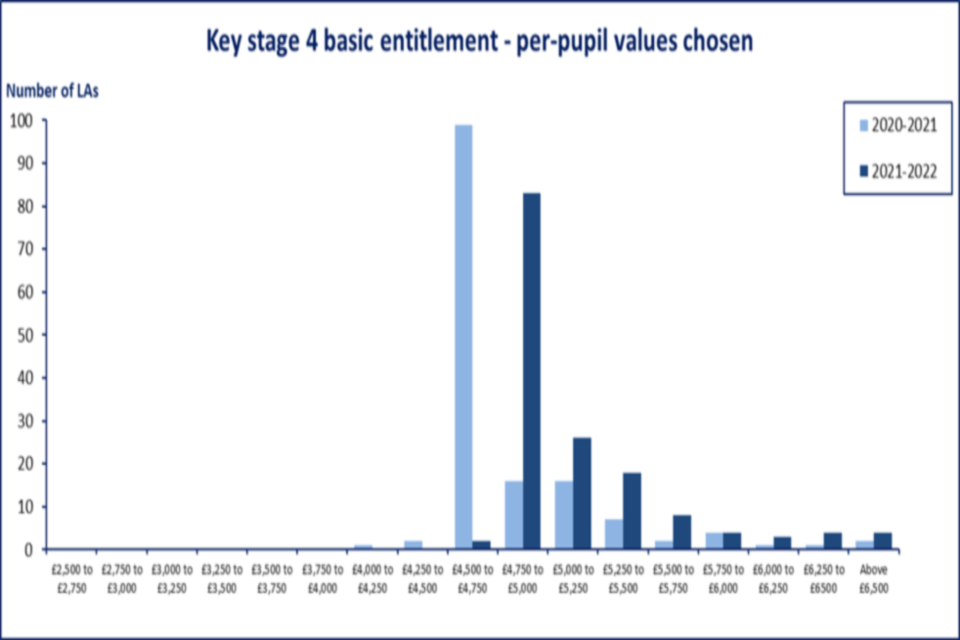
Figure 3: KS4 basic entitlement
Across all local authorities 103 are mirroring the NFF almost exactly (109 have used a value within 1% of the NFF values of £3,123 for primary, 113 within 1% of the NFF KS3 value of £4,404 and 111 within 1% of the NFF KS4 value of £4,963).
The final chart in this section, figure 4, shows the proportions of schools block funding that local authorities are allocating through the basic per pupil funding factor. Overall, the proportion of funding being allocated through the basic entitlement ranges from 62% to 83%, with 87% of local authorities allocating between 70% and 80%. Across all local authorities, 74.5% of funding is being allocated through basic entitlement, compared to 73.8% of funding in the 2020 to 2021 formulae and 75.3% in the NFF.
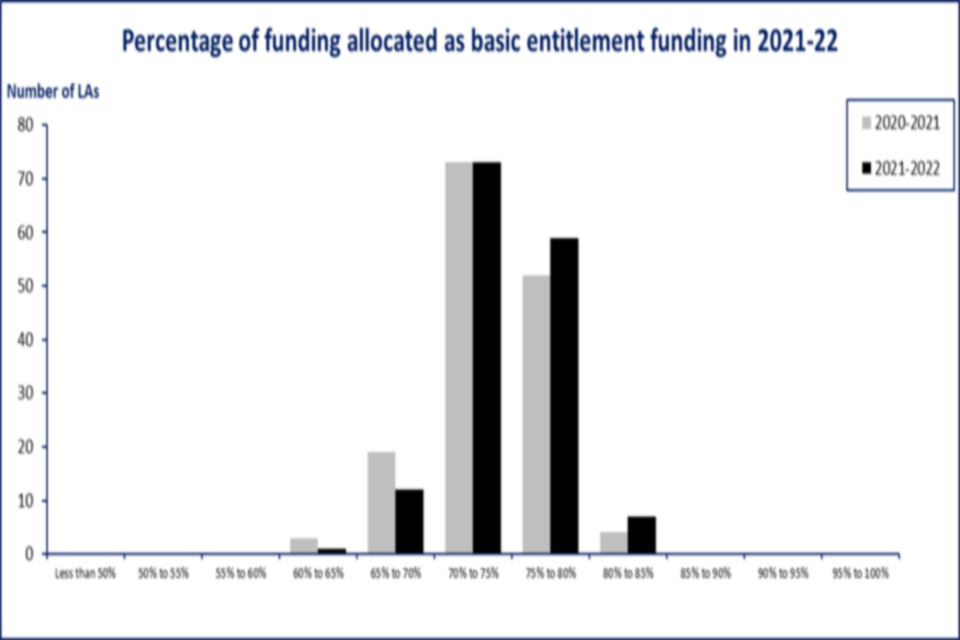
Figure 4: Percentage of funding allocated as basic entitlement funding
3. Deprivation
This is another mandatory factor which every local authority must use in their 2021 to 2022 formula. Local authorities can distribute their deprivation funding using any combination of the 3 indicators: children eligible for free school meals, children eligible for free school meals in any of the last 6 years or Income Deprivation Affecting Children Index (IDACI) data.
IDACI ranks are taken from the English Indices of Deprivation (IMD) for 2019 published by the Ministry for Housing, Communities and Local Government. IDACI is a measure of income deprivation and identifies the proportion of children in out-of-work households or on low incomes.
The IDACI scores are grouped into 7 bands as per the table below:
| IDACI rank | IDACI band value |
|---|---|
| 1 to 821 | A |
| 822 to 2463 | B |
| 2463 to 4105 | C |
| 4106 to 5747 | D |
| 5748 to 9032 | E |
| 9033 to 12316 | F |
| Over 12316 | G |
Figure 5 indicates that there is some variation between local authorities in the amount of funding allocated through this element of the factor. Of the 152 local authorities, 150 are using IDACI in their deprivation factor and are using it to allocate 3.5% of their total funding, compared to 3.7% in 2020 to 2021.

Figure 5: percentage of funding allocated through the IDACI factor
For 2021 to 2022 we have used 2019 data from the IDACI in place of 2015 data. We have changed the basis on which we assign pupils to the IDACI bands: they are now assigned based on rank rather than score. For example, Band A now consists of pupils in the most deprived 2.5% of lower super output areas (LSOAs), instead of consisting of pupils in LSOAs with an IDACI score greater than 0.5. The size of each of the bands created for 2021 to 2022 was set to maintain a similar proportion of pupils nationally in each band as there were in 2020 to 2021.
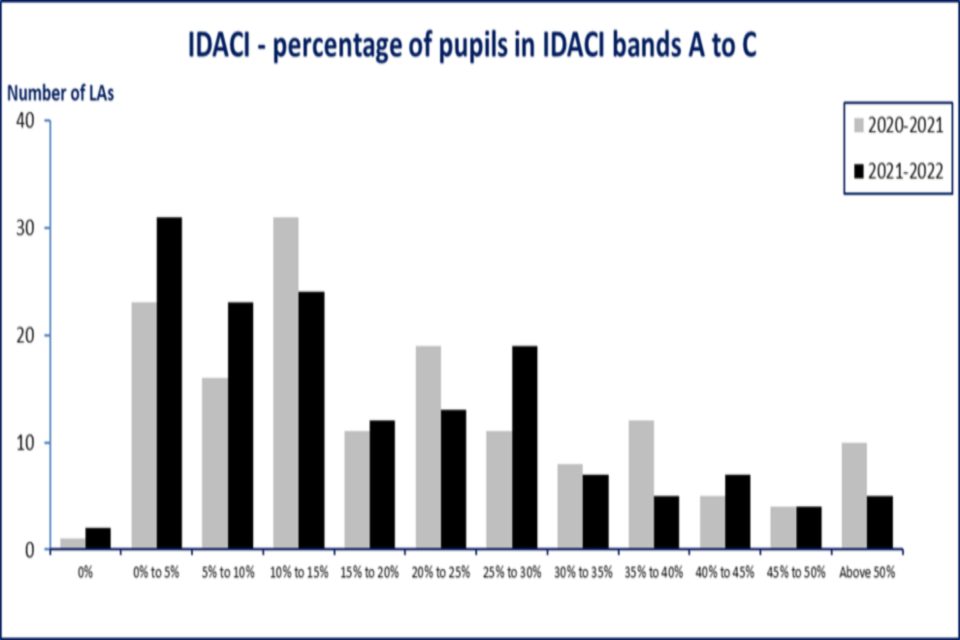
Figure 6: percentage of pupils in IDACI bands A to C
Because of the different permutations of deprivation indicator selections available for local authorities to use for this factor, it is not immediately straightforward to calculate per-pupil funding amounts on a comparable basis. For the purpose of this analysis, total funding allocated through the 3 deprivation factors is divided by the number of pupils eligible for free school meals (FSM), to obtain an estimate of the deprivation funding per FSM pupil. Figure 7 indicates that there is some variation between local authorities in the amount of deprivation funding allocated per FSM pupil. Ninety-five per cent are allocating between £1,500 and £3,000 per FSM pupil.
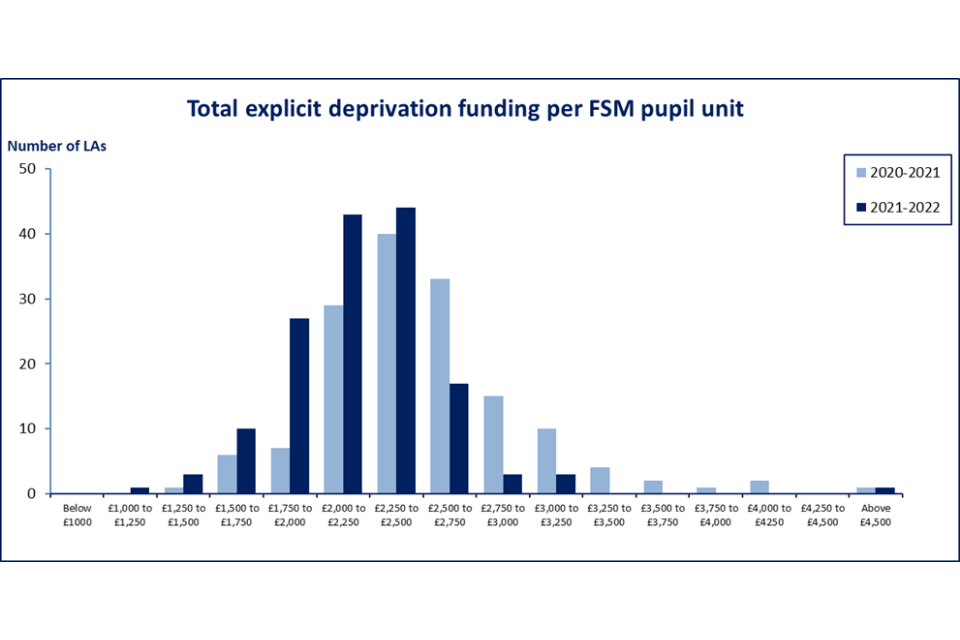
Figure 7: total explicit deprivation funding per FSM pupil unit
There is considerable variation in the proportion of schools block funding which local authorities are allocating to schools through the deprivation factor, ranging from 0.5% to 16.6%.
There is some variation in allocation within local authorities from last year, but across all local authorities, the allocation has decreased to 8.6% in 2021 to 2022 compared with 8.7% in 2020 to 2021 and 8.8% in the NFF.

Figure 8: percentage of funding allocated to deprivation factor
4. Looked-after children
Use of this factor in funding formulae is optional, and only 10 local authorities have chosen to use it, compared to 12 in 2020 to 2021. The factor is not included in the NFF and this may be the reason for the continued decrease in the number of local authorities using it in their 2021 to 2022 formula (in 2017 to 2018, before the introduction of the NFF there were 88 local authorities using the factor).
The indicator local authorities can use for this factor is children looked after for any period of time as at the end of March 2020. Of the local authorities that are using the factor 80% are allocating less than £1,250 per pupil. Figure 9 shows the amount allocated per pupil by those local authorities using the factor.
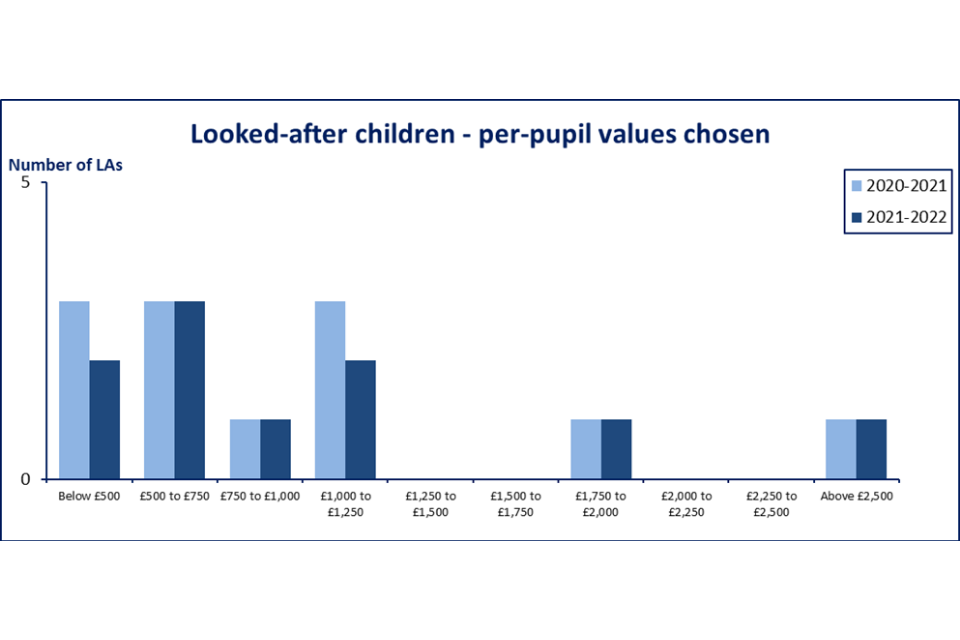
Figure 9: looked-after children per-pupil values chosen
Across all local authorities (including those not using the factor), a total of 0.004% of schools block funding is being allocated through the looked-after children factor.
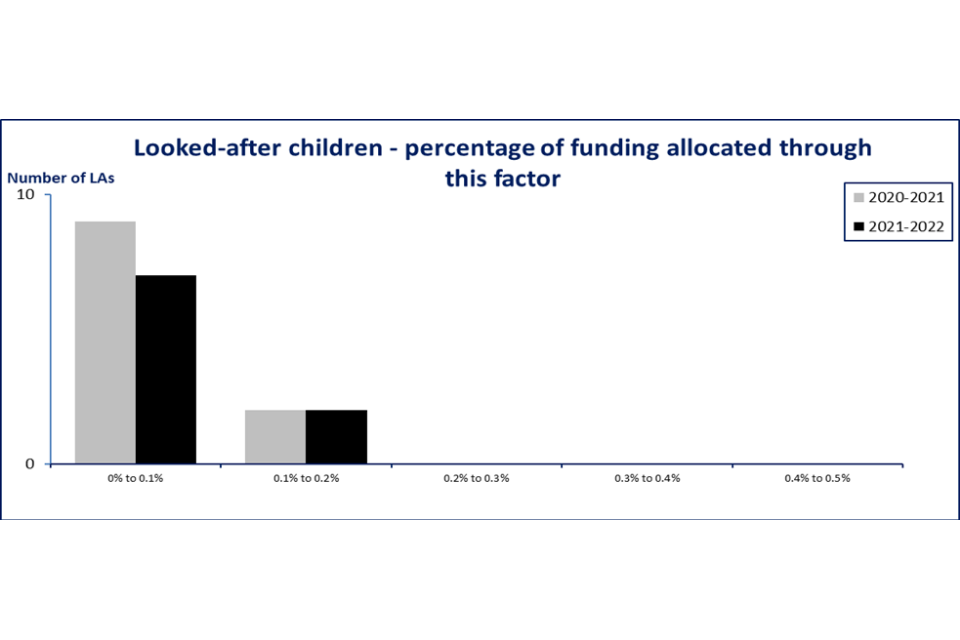
Figure 10: percentage of funding allocated through the looked-after children factor
5. Low prior attainment
While use of this factor is optional, all local authorities are using the indicator for primary pupils (as in the 2020 to 2021 formulae) and 151 are using the indicator for secondary pupils. City of London have not used the indicator for secondary pupils as they do not have any secondary age pupils in their sole school (this was the same as in 2020 to 2021).
For primary pupils, the indicator is the number of children in years 1 to 6 assessed under the new early years foundation stage profile as not achieving a good level of development.
For secondary pupils, a new national curriculum and assessment was introduced in the 2015 to 2016 academic year which all years 8 to 11 have now been assessed under. The proportion of pupils who fall into the low prior attainment bracket is higher than the proportion in year 11, so a national weighting has been applied to each of these years to prevent them overly influencing the funding levels. Separate weightings have been applied to each year. Please see page 15 of the Schools operational guide 2021 to 2022 for further details. Due to the impact of Covid-19 no national tests were carried out in 2020 so for pupils in years 1 and 7 the proportion of pupils eligible in years 2 and 8 were used to identify the proportion of eligible pupils. Where a school had no pupils in year 2 or year 8 the corresponding local authority average was used.
The distribution of the low prior attainment rates for both primary (figure 11) and secondary pupils (figure 12) shows further movement towards the NFF values of £1,095 and £1,660 respectively. There are 114 local authorities mirroring the NFF on prior attainment (116 have selected a primary value within 1% of the NFF value of £1,095 and 118 within 1% of the NFF value of £1,660).

Figure 11: primary low prior attainment per-pupil values chosen

Figure 12: secondary prior attainment per-pupil values chosen
Figure 13 shows that 88% of local authorities are allocating between 5% and 10% of their schools block funding through this factor compared with 87% last year. Across all local authorities, the percentage of funding allocated through the factor is 6.4%, compared to 6.7% in 2020 to 2021 and 6.9% compared to the 2021 to 2022 NFF.
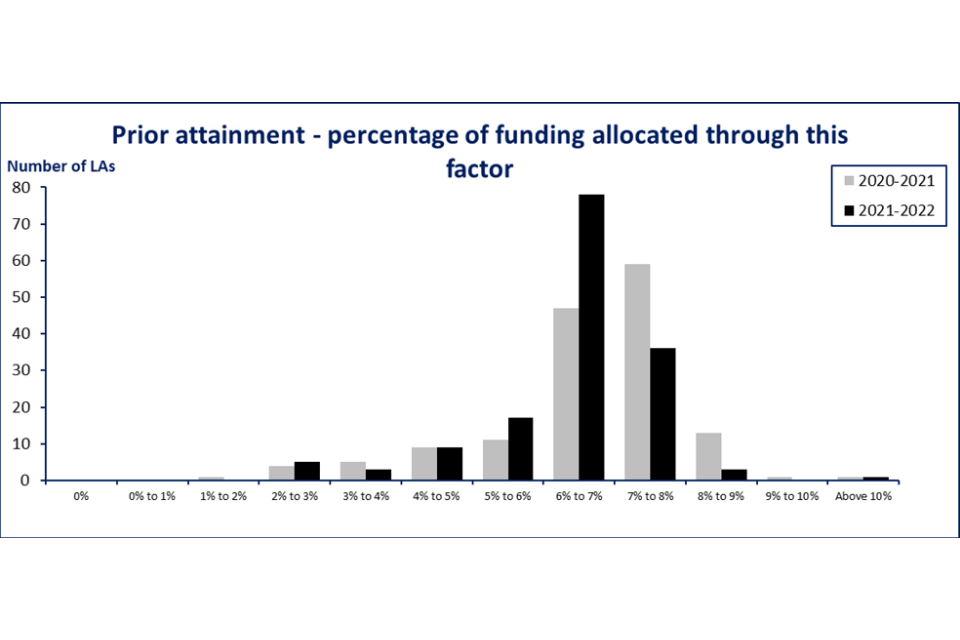
Figure 13: low prior attainment percentage of funding allocated through this factor
6. English as an additional language (EAL)
In 2021 to 2022 EAL was used by all but 2 local authorities, the same as in 2020 to 2021. Local authorities can choose one of 3 indicators for this factor: the number of pupils with EAL who entered the compulsory school system in either the last 1, 2 or 3 years. The NFF allocates funding to EAL pupils entering the compulsory school system in the last 3 years. Of the 150 local authorities including the factor, 143 have used the same criteria as the NFF: an increase from 139 in 2020 to 2021.
The distribution of the EAL rates for both primary and secondary pupils shows further movement towards the NFF values of £550 and £1,485. For the primary indicator 92% of local authorities are allocating between £500 and £750 per pupil. For the secondary indicator 64% are allocating between £1,250 and £1,500 per pupil. There are 119 local authorities mirroring the NFF value for EAL (120 have selected a value within 1% of the NFF primary EAL value of £550 and 121 have selected a value within 1% of the NFF secondary EAL value of £1,485).
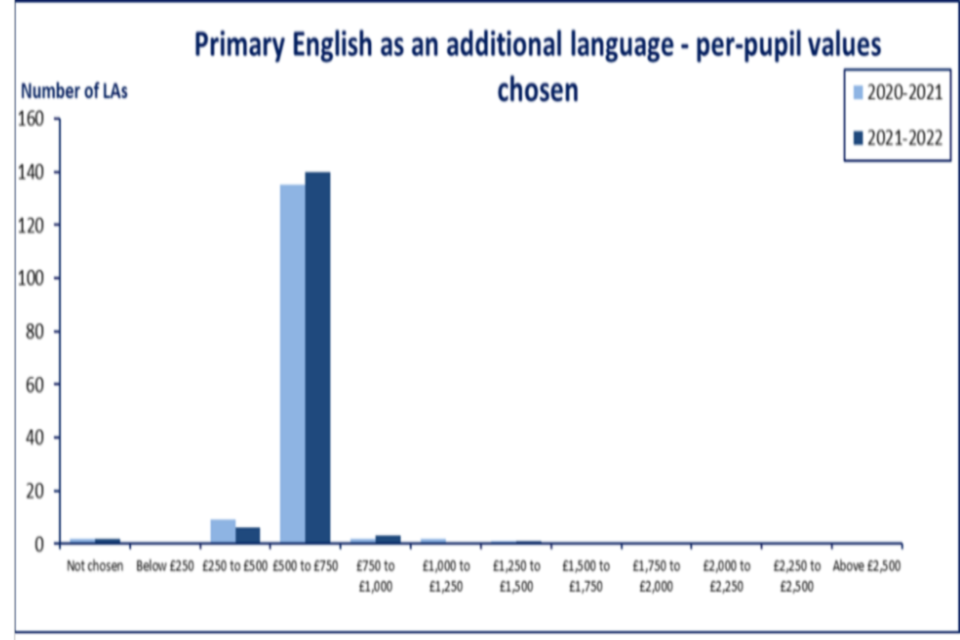
Figure 14: primary English as an additional language (EAL) factor per-pupil values chosen
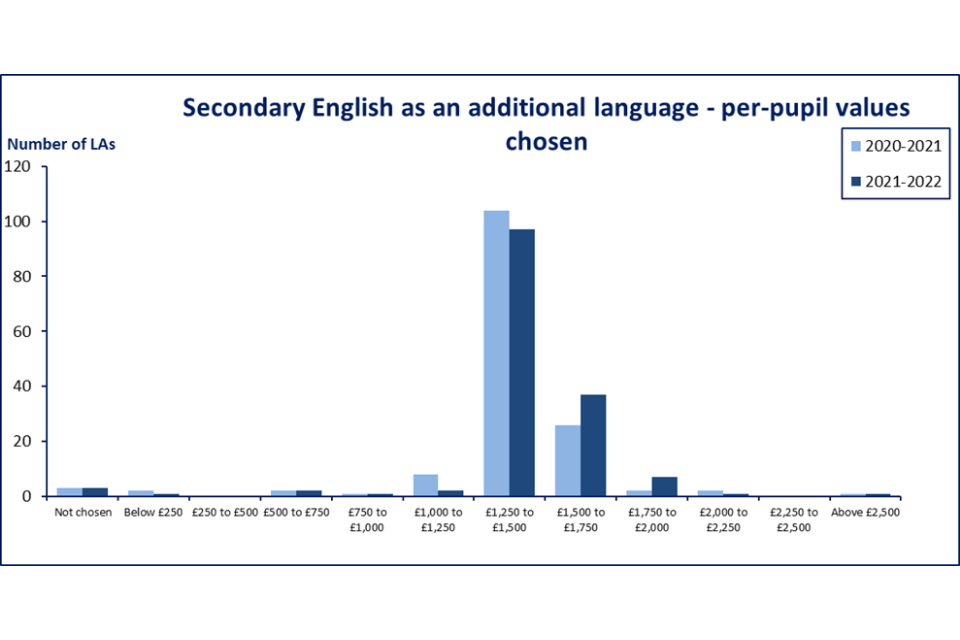
Figure 15: secondary English as an additional language (EAL) factor per-pupil values chosen
Fewer pupils attract funding through the EAL factor than through many other factors. Across all local authorities, just 1% of funding is allocated through this factor, a decrease from 1.1% in 2020 to 2021.
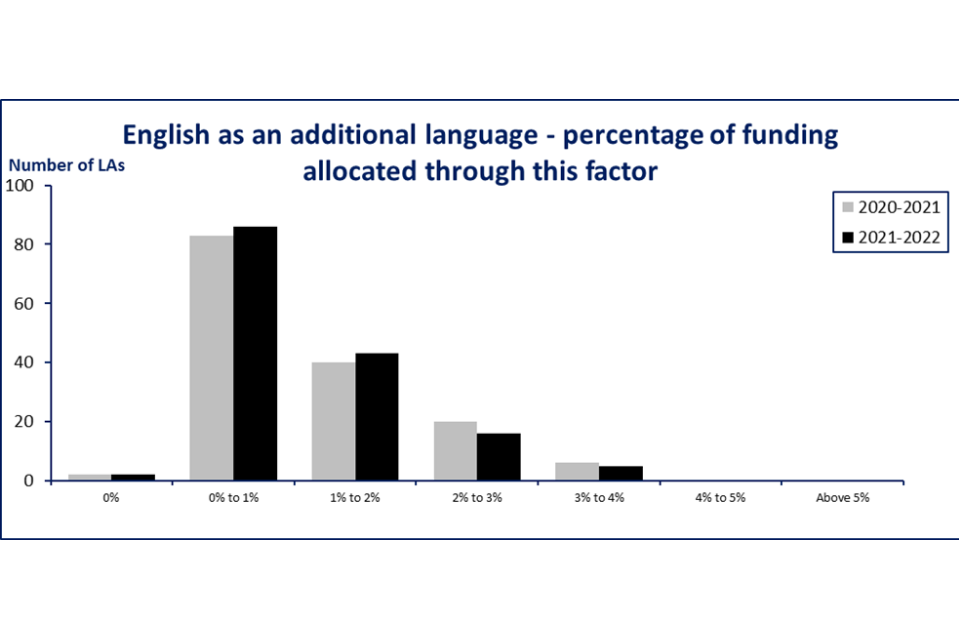
Figure 16: percentage of funding allocated through the EAL factor
7. Mobility
Use of this factor is optional, and 121 of the 152 local authorities have chosen to use it compared with 116 in 2020 to 2021. Most local authorities have used values close to the NFF values of £900 for primary pupils and £1,290 for secondary.
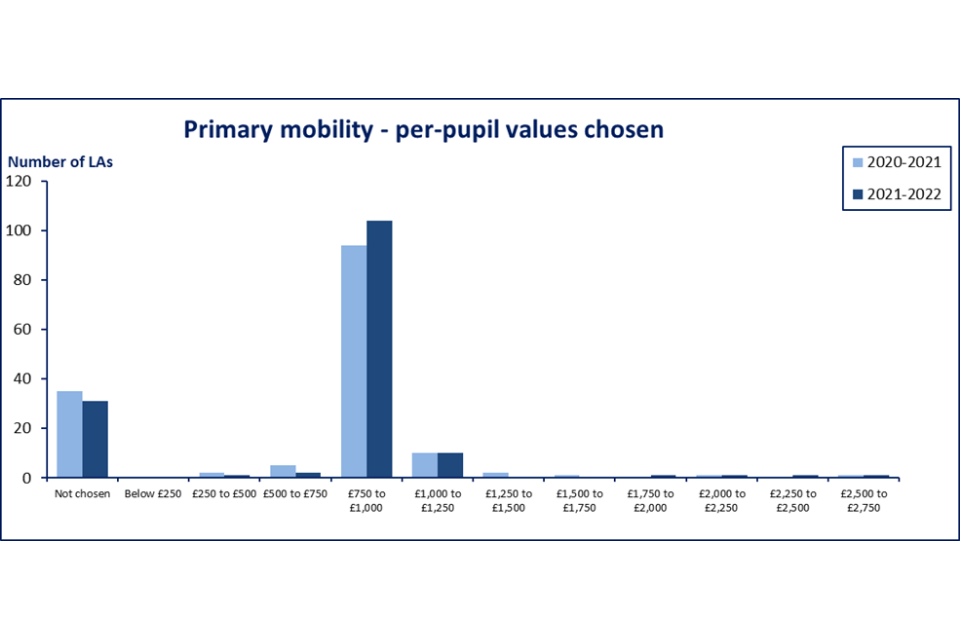
Figure 17: primary mobility: per-pupil values chosen
The indicator for this factor is the number of pupils with an entry date in the last three years which is not typical [footnote 6] and is payable on the number of pupils exceeding 6% (for example if a school has 10% mobile pupils, funding is applied to 4%).
Primary per-pupil amounts range from £450 to £5,443, and the secondary per-pupil amounts from £646 to £3,372.
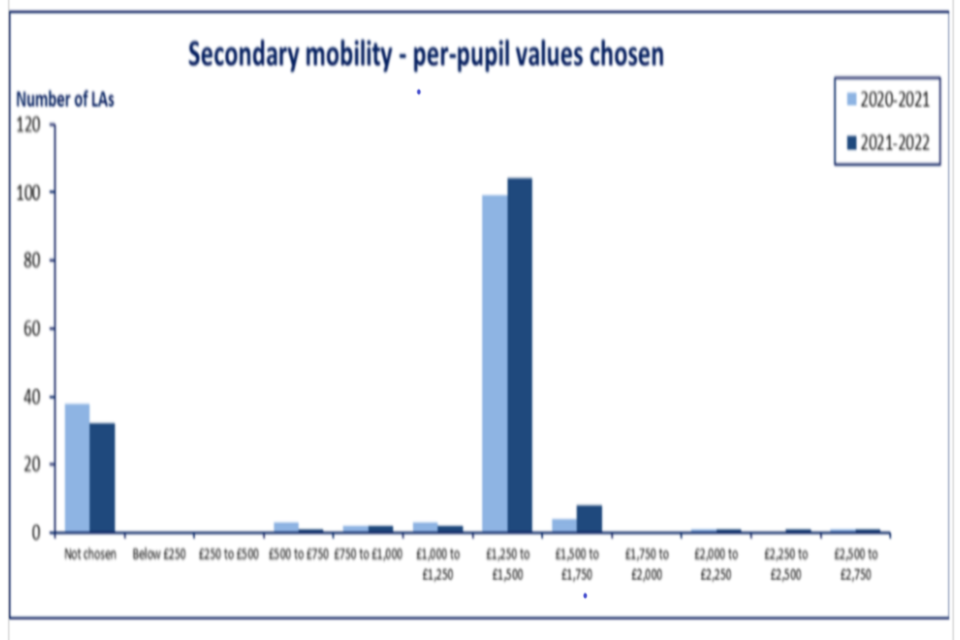
Figure 18: secondary mobility: per-pupil values chosen
None of the local authorities incorporating the mobility factor in their 2021 to 2022 funding formulae are using it to allocate more than 0.5% of their schools block funding, and only one is allocating more than 0.25%. Across all local authorities, some 0.05% of schools block funding is being allocated through this factor, a decrease from 0.11% in the 2020 to 2021 formulae.
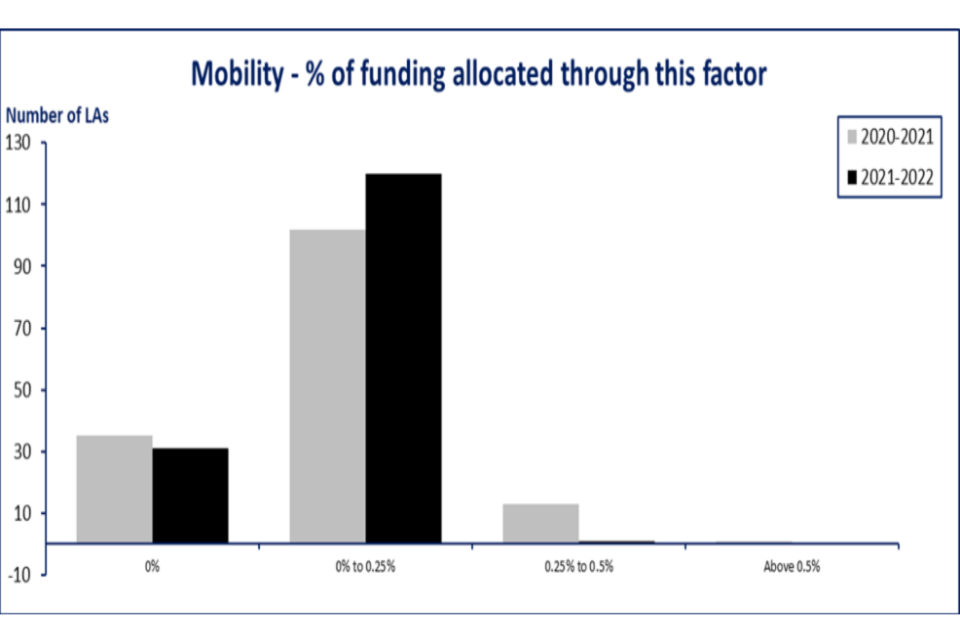
Figure 19: primary mobility: per-pupil values chosen
8. Total funding through the pupil-led factors
Basic per-pupil entitlement, deprivation, looked-after children, prior attainment, English as an additional language, and mobility are pupil-led factors.
Although there is considerable variation across local authorities in the choices of factors used, the per-pupil amounts, and the proportions of funding allocated through each one; overall, there is strong consistency in the proportions of funding allocated through the pupil-led factors as a whole.
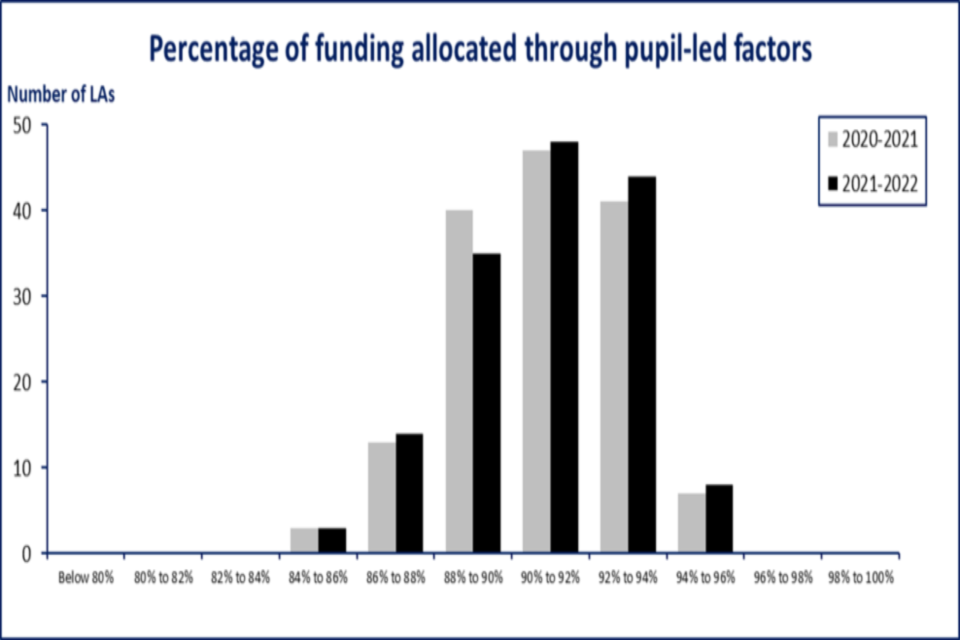
Figure 20: percentage of funding allocated through pupil-led factors
A requirement for the 2021 to 2022 formulae is that each local authority must allocate a minimum of 80% of schools block funding through these pupil-led factors.[footnote 7]
All local authorities are allocating more than 80% of their funding through a combination of the pupil-led factors, the lowest being 84.9%. In total 84% of local authorities are allocating between 88% and 94% of their funding through these factors.
Across all local authorities, a total of 90.9% of funding in 2021 to 2022 formulae is being allocated through the pupil-led factors. This compares to:
- 90.41 in 2020 to 2021
- 90.52% in 2019 to 2020
- 90.57% in 2018 to 2019
- 89.6% in 2017 to 2018
- 89.84% in 2016 to 2017
- 89.73% in 2015 to 2016
- 89.56% in 2014 to 2015
- 89.46% in 2013 to 2014
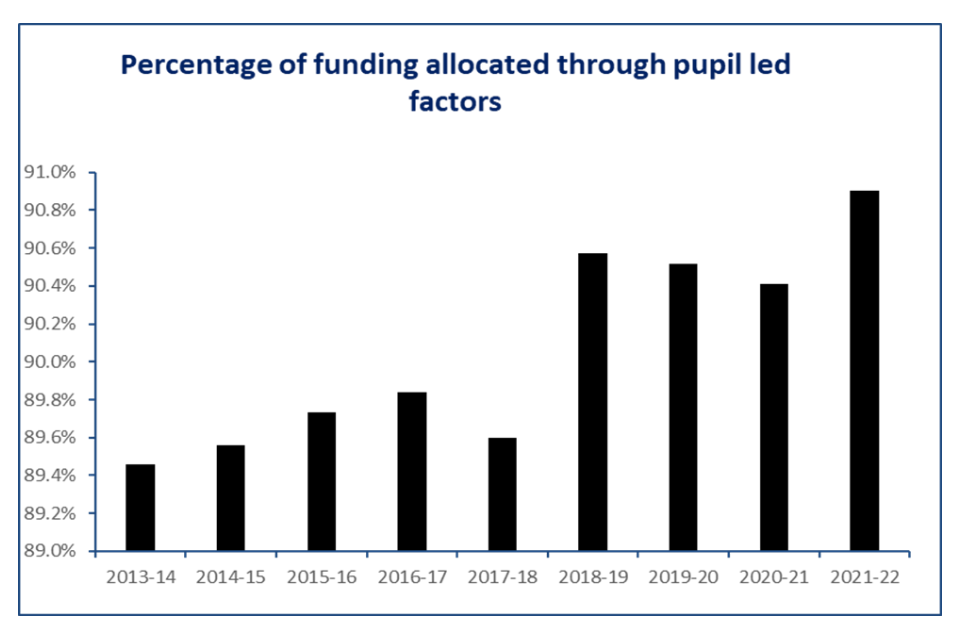
Figure 21: percentage of funding allocated through pupil-led factors
9. Lump sum
In the 2021 to 2022 formulae, local authorities can use this factor to allocate a lump sum of the same amount to all schools, up to a maximum of £175,000. Separate lump sums can be specified for primary schools and secondary schools. All-through schools receive the lump sum specified for secondary schools. Middle schools receive a weighted combination of the two, based on the number of year groups of each phase present at the school.
For a school which amalgamated during the 2020 to 2021 financial year, local authorities must allocate it additional lump sum funding, so that it receives 85% of the combined lump sums that its predecessors would have received under the 2021 to 2022 formula.
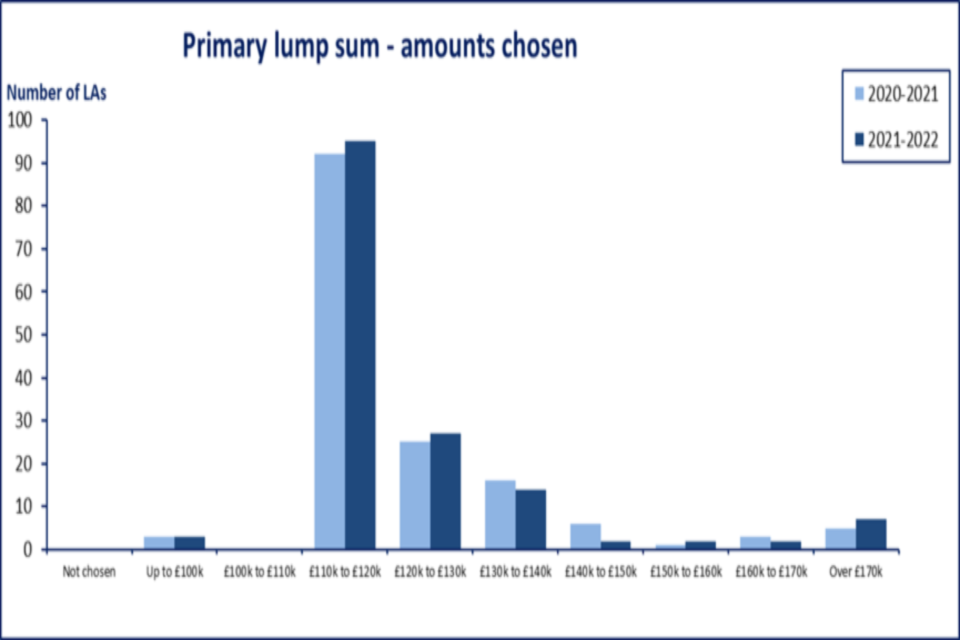
Figure 22: primary lump sum: amounts chosen
Although the lump sum is an optional factor, like last year all local authorities have chosen to include it in their 2021 to 2022 funding formulae. [footnote 8]
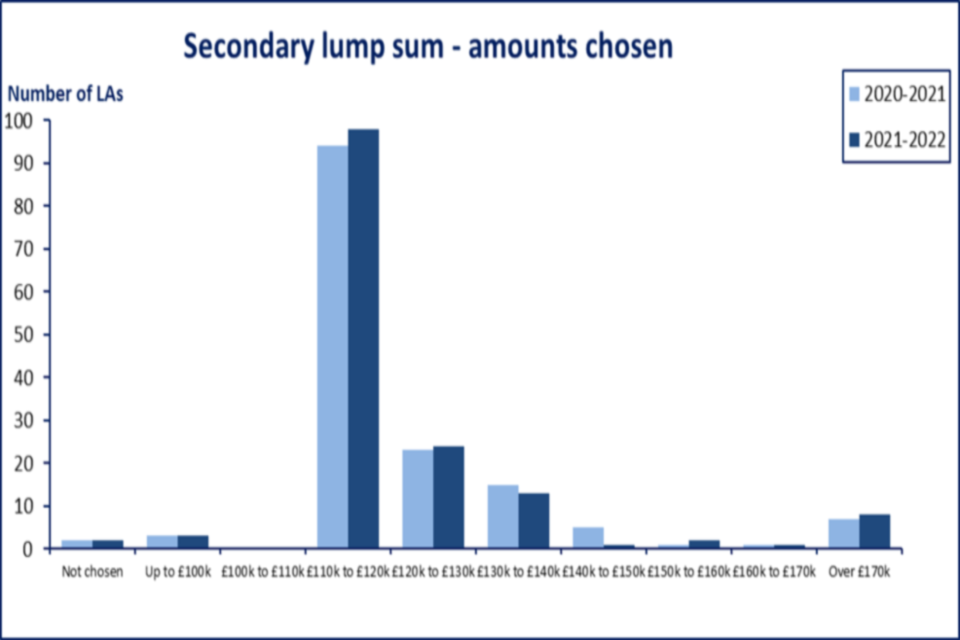
Figure 23: secondary lump sum: amounts chosen
There has been a continued shift in the distribution of the lump sum values used, with more local authorities choosing to use the NFF amount of £117,800 or a value close to it. However, there is still substantial variation in the value of the lump sums selected for both primary and secondary schools. The maximum value of £175,000 was chosen by 6 local authorities for their primary lump sum amount and 7 for their secondary lump sum (this compares with 5 selecting the maximum primary lump sum and 6 the maximum secondary lump sum in 2020 to 2021). The NFF rate of £117,800 has been used by 61 local authorities for primary schools and 64 local authorities for secondary schools compared with 52 for primary and 55 for secondary in 2020 to 2021 using the NFF rate of £114,400. A total of 106 local authorities have selected a value within 1% of the NFF value for both the primary and secondary lump sum.
There are 141 local authorities that have selected equal primary and secondary lump sum amounts, which is the approach taken in the NFF. Four have selected a greater secondary lump sum than primary; and a further 7 have selected a greater primary lump sum than secondary.
Note that in figures 22 and 23, the lump sum choices of exactly a multiple of £10,000 are shown in the category for which that is the top of the band. For example, the 2 local authorities with a primary lump sum of £140,000 are included in the ‘£130k to £140k’ category.
Overall, local authorities are allocating a lower proportion of their schools block funding through the lump sum factor than last year: 6.4% in 2021 to 2022 compared with 6.9% in 2020 to 2021. The NFF also allocates 6.4% of funding through the lump sum in 2021 to 2022.
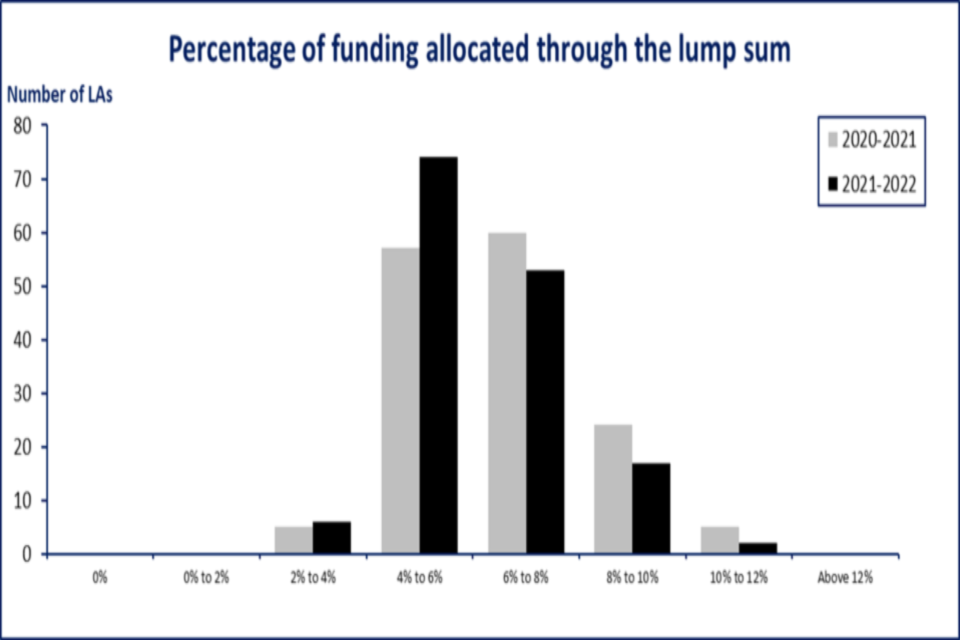
Figure 24: percentage of funding allocated through the lump sum
10. Sparsity
Whether a school is deemed to be sparse depends on 2 considerations: its sparsity distance and the average number of pupils per year group.
A school’s sparsity distance is derived from those pupils for whom it is their closest school (irrespective of whether they attend it). For all those pupils, the average distance to their second nearest school is calculated. For 2021 to 2022 distances are calculated using the crow flies distance from a pupil’s postcode to a school’s postcode, although local authorities are able to submit a request to vary how distance is measured for sparsity funding allocations.
The sparsity factor may be applied to small schools where the average distance to pupils’ second nearest school is at least 2 miles (for primary schools, middle schools and all through schools) or 3 miles (for secondary schools). Schools must also have an average number of pupils per year group no larger than:
- 21.4 pupils for primary schools
- 120 pupils for secondary schools
- 69.2 pupils for middle schools
- 62.5 pupils for all-through schools
Local authorities can narrow the eligibility criteria for the factor, by increasing the average distance to the second nearest school and/or reducing the average pupil number maximum thresholds, but they cannot widen the eligibility criteria.
Local authorities can set different sparsity lump sum amounts for each of these 4 phases of school, up to a maximum of £100,000 per school. They can also choose in each case whether to apply a ‘taper’ so that the funding given to a sparse school depends on how many pupils they have (so that the smaller schools receive higher sparsity funding) or that all sparse schools receive the same specified sparsity lump sum. Local authorities are also allowed to apply to use the rules set out in the Schools block national funding formula: technical note. Where the school has more pupils than half the year group threshold a weighting is applied to the lump sum amount meaning affected schools only receive a portion of the lump sum.
Additional sparsity funding of £50,000 can also be allocated to very small, sparse secondary schools.
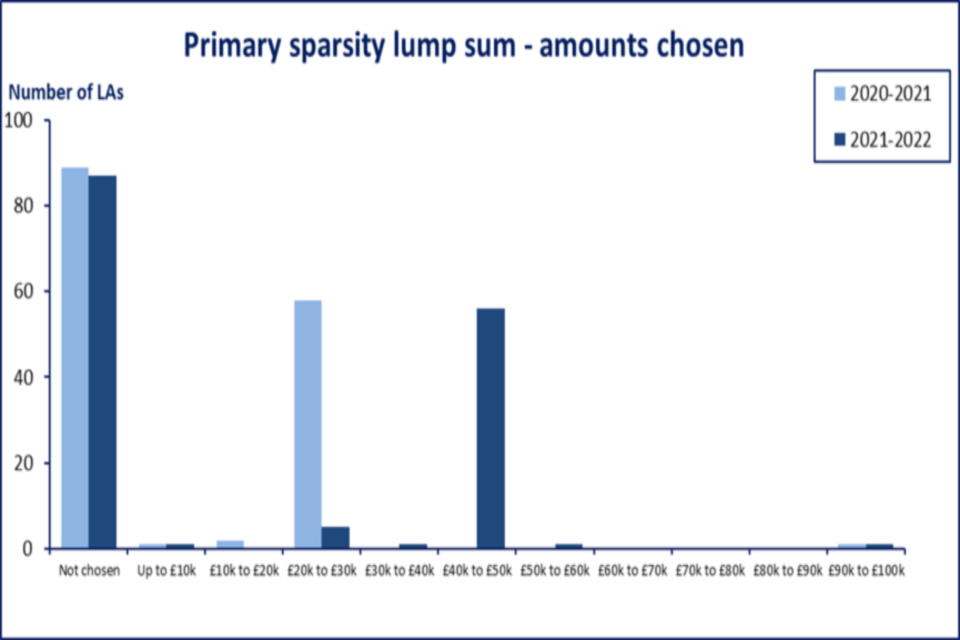
Figure 25: primary sparsity lump sum - amounts chosen
Additional sparsity funding of £50,000 can also be allocated to very small, sparse secondary schools.

Figure 26: secondary sparsity lump sum: amounts chosen
In 2021 to 2022, 66 local authorities are using the sparsity factor compared with 63 in 2020 to 2021. This includes 13 local authorities which have no eligible schools so do not actually allocate any funding through the factor.
Of the 55 local authorities that attract sparsity funding through the NFF, 53 have used the factor in their local funding formulae and 38 are mirroring the NFF values. The increase in local authorities using this factor reflects the number using the NFF rates. Many of those local authorities not using the factor do not have any schools meeting the maximum permissible average year group size or minimum permissible distance thresholds for eligibility for funding through the factor, so do not have any sparse schools.
Of those that are using the factor, and excluding the Isles of Scilly (a notional 3.48%), the proportion of their schools block funding which they are allocating through this factor ranged from 0.004% to 1.21%. Across all local authorities, 0.1% of funding has been allocated through this factor, a slight increase on the 0.07% in the 2020 to 2021 formulae.
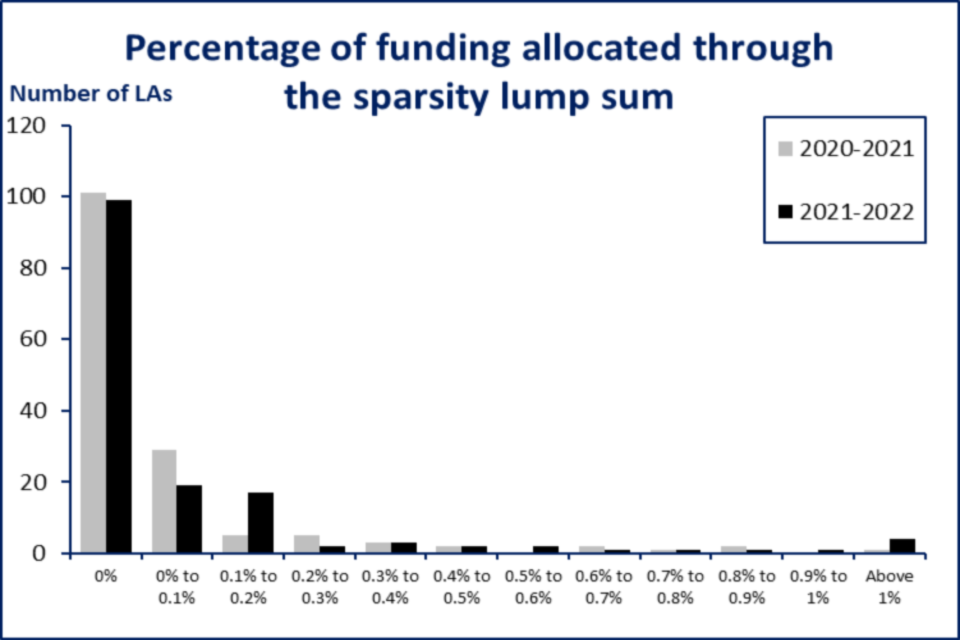
Figure 27: percentage of funding allocated through the sparsity lump sum
11. Minimum per-pupil funding levels (MPPL)
The NFF provides local authorities with a guaranteed minimum per-pupil funding of £4,180 for primary pupils, £5,215 for KS3 pupils, £5,715 for KS4 pupils (which amounts to £5,415 for secondary pupils in schools with pupils in all 5 secondary year groups) in 2021 to 2022, based on the school’s total core funding.
In 2021 to 2022, local authorities must use this factor to set a guaranteed minimum per-pupil level of funding. The per-pupil values are also mandatory.
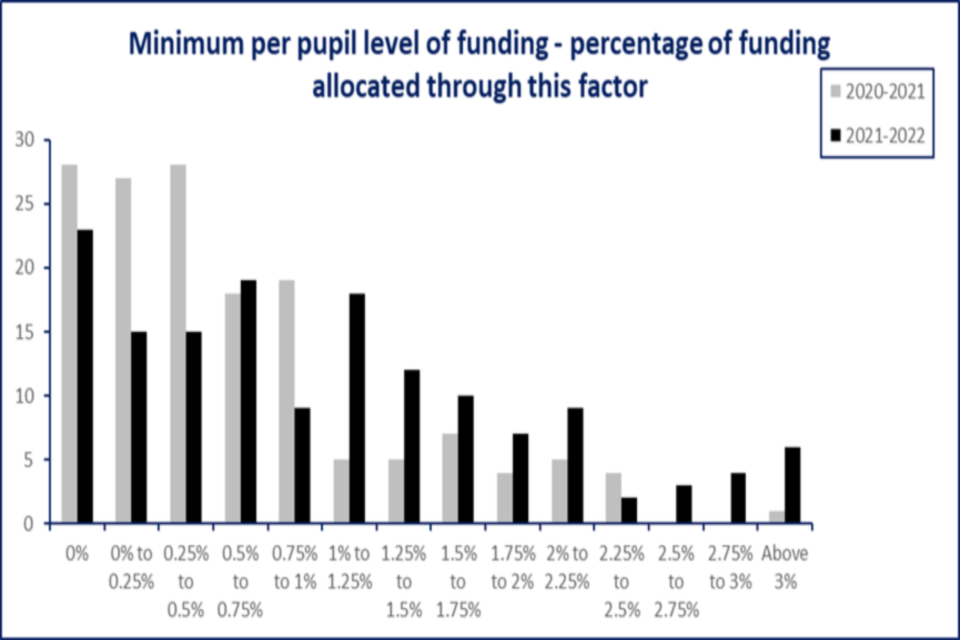
Figure 28: percentage of funding allocated through the MPPL
Although every local authority was required to use the factor, only 129 actually allocated funding through it. This is because all schools in the other 23 local authorities were already receiving over the minimum level through the other funding factors. Overall, 71 local authorities allocated more than 1% of their funding through the MPPL factor.
12. Other formula factors
Information for each local authority on the formula factors not discussed in this note (London fringe, split sites, rates, PFI funding, and exceptional circumstances) can be found in the accompanying data file.
13. Primary: secondary funding ratios
Local authorities’ 2021 to 2022 schools block funding formulae have been used to calculate the relative differences in per-pupil funding allocated to secondary pupils compared to primary pupils. A ratio of 1:1.24, for instance, indicates that secondary-age pupils in a local authority receive, on average, 24% more funding per head than primary-age pupils.
With the exception of the City of London, which has a single maintained primary school (and no secondary pupils), the ratios of secondary to primary per-pupil funding under 2020 to 2021 formulae are shown in figure 29.

Figure 29: primary and secondary ratios
The overall ratio nationally across all local authorities is 1:1.296, a slight decrease from the 2020 to 2021 formulae where it was 1:1.298. For 32 local authorities, their ratio in 2021 to 2022 has decreased by more than 0.01 compared with last year, while for 21 local authorities, their ratio has increased by more than 0.01. For the remaining 98 local authorities, their ratio changed by less than 0.01 either way.
These ratios have been calculated for each local authority from the information they submitted to ESFA as follows:
- The funding for primary pupils and funding for secondary pupils is split. For the factors with separate primary and secondary indicators (for example, basic entitlement and deprivation), this split is simply the amount of funding allocated through each type of indicator. For the other factors, the amount of funding allocated to each school in the local authority area is split between primary and secondary in proportion to the number of pupils in each phase at the school.
- These amounts are aggregated to estimate the total funding for primary pupils and the total funding for secondary pupils.
- These amounts are then divided, respectively, by the number of primary schools block-funded pupils on roll, and the number of secondary schools block-funded pupils on roll.
- This gives per-pupil funding amounts for primary and secondary phases, and the ratio of the two is taken.
This calculation excludes the effects on schools’ funding of applying the MFG and excludes any capping or scaling factors applied by local authorities. This ensures that the total funding allocated through their formulae is affordable within the total DSG schools block they have been allocated for financial year 2021 to 2022. For academies, the calculation is based on the amount of schools block funding they would receive in 2021 to 2022 if they were a maintained school.
14. Minimum funding guarantee (MFG)
The MFG protects the per-pupil funding of schools from one year to the next. For 2021 to 2022 local authorities can set a rate between 0.5% and 2%, compared to the range of -0.5% and 1.84% in 2020 to 2021. This change allows local authorities to mirror the 2% funding floor protection included in the NFF which 88 local authorities chose to do in 2021 to 2022.
All local authorities are required to set a positive MFG threshold meaning that schools will see an increase in their per-pupil level of funding in 2021 to 2022. Figure 30 shows that 119, or 78%, of local authorities have chosen an MFG threshold of 1% or higher. It also shows that 88 or 58% have selected a threshold of 2% mirroring the funding floor protection.
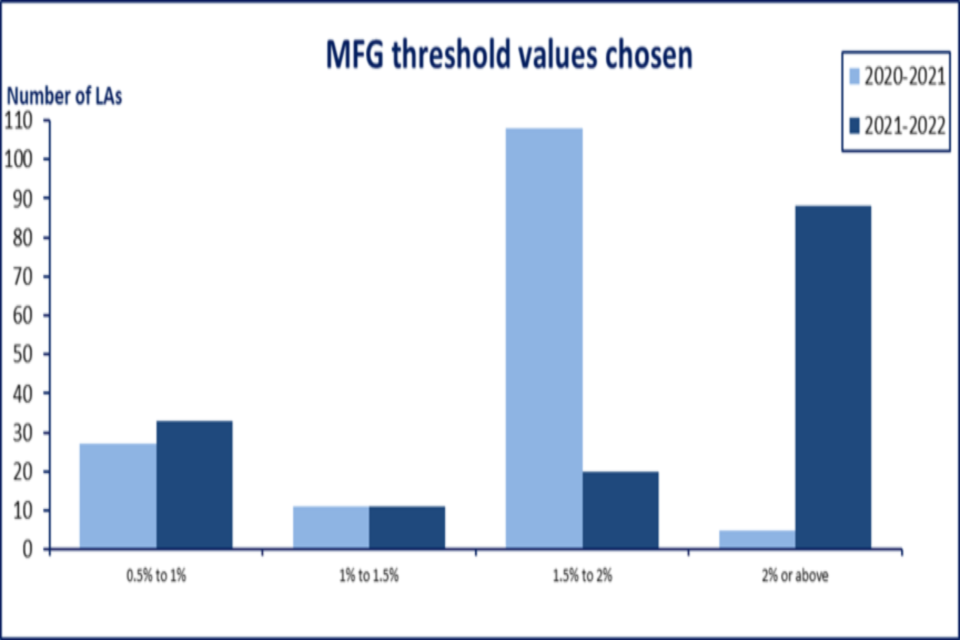
Figure 30: MFG threshold values chosen
15. Notional special educational needs (SEN)
Funding for notional SEN is not a separate formula factor. In their funding formulae for 2021 to 2022, local authorities specify what percentage of funding allocated through each factor contributes to their notional SEN budget.
Figure 31 shows how, at overall local authority level, the notional SEN budget in 2021 to 2022 varies as a percentage of the total schools block formula allocation (before the application of MFG, capping and scaling). Some 126 (83%) local authorities are allocating between 5% and 15% of schools block funding as notional SEN.
The overall percentage of formula allocation which is designated as the notional SEN budget across all local authorities is 11.1%, a slight decrease from 11.4% in 2020 to 2021. The median notional SEN allocation is 10.7%. However, as figure 31 shows, like last year there is a wide variation across local authorities.

Figure 31: percentage of funding allocated to notional SEN
Figure 32 shows the number of local authorities for which each factor is being used to determine schools’ notional SEN budgets. In the 2020 to 2021 formulae, deprivation is the factor most commonly contributing to notional SEN with all 152 local authorities using it.
The majority of local authorities are also assigning a percentage of their basic entitlement and prior attainment funding into notional SEN. For the formula factors not displayed on the chart (such as split sites) only a few local authorities are using these for notional SEN. Full details on the use of factors to calculate notional SEN in 2021 to 2022 can be found in the accompanying data file.
Overall, the pattern of factors used to calculate notional SEN is similar to 2020 to 2021 formulae although a small number of local authorities have allocated notional SEN through the MPPF and MFG in 2021 to 2022.
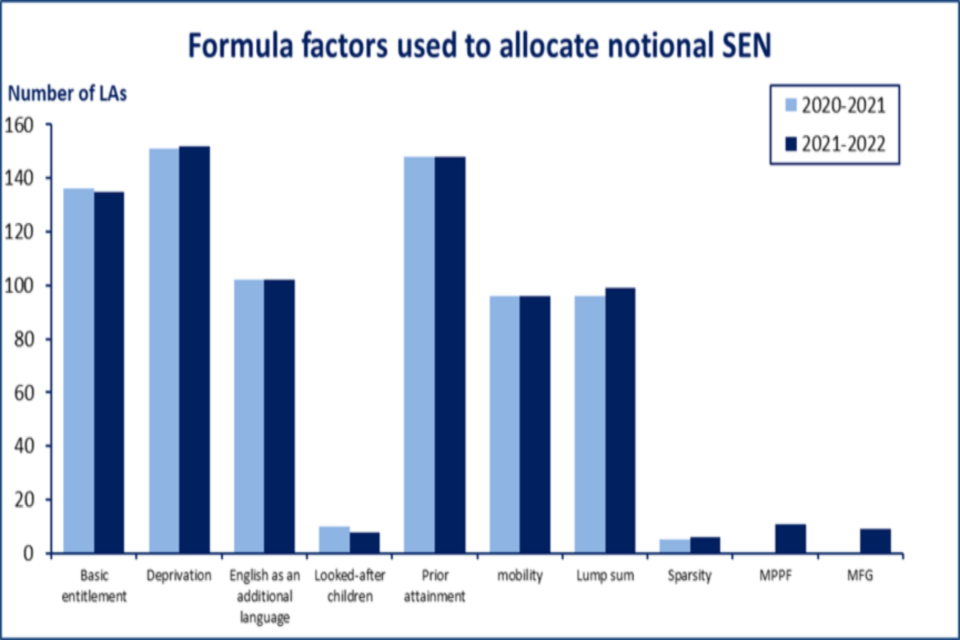
Figure 32: formula factors used to allocate notional SEN
16. Growth Fund
Subject to the approval of their schools forum, local authorities are able to retain some of their schools block funding centrally (that is, rather than allocate it to their individual schools) for a growth fund. This can only be used:
- for the purposes of supporting growth in pre-16 pupil numbers to meet basic need pressures
- to support additional classes needed to meet the infant class size regulation
- to meet the costs of new schools
Local authorities must use the fund on the same basis for the benefit of both maintained schools and academies in their area.
Some 136 of the 152 local authorities are retaining a growth fund in 2021 to 2022, compared with 140 in 2020 to 2021. The total value of these growth funds is £157.2 million compared with £185.2 million in 2020 to 2021. Growth fund amounts for individual local authorities range from £10,600 to £7.3 million. It is worth noting that local authorities may also be spending on growth by adding pupil numbers.
17. Falling rolls fund
Local authorities were also able to retain funding centrally to support schools currently experiencing falling rolls to prepare for an expected future population bulge, again subject to the approval of their schools forum. The falling rolls fund should be restricted to population increases expected in 2 to 3 years in necessary schools which are classed by Ofsted as good or outstanding. The fund cannot be used by local authorities to prop up unpopular or failing schools.
Only 23 local authorities are retaining a falling rolls fund in their 2021 to 2022 formulae, with a total value of £9.1 million compared to 23 local authorities allocating £11.3 million in 2020 to 2021. Falling rolls fund amounts for individual local authorities range from £50,000 to £1.5 million.
18. Information about the data file spreadsheet
Alongside this document, we have published a detailed data file in Microsoft Excel format showing the 2021 to 2022 funding formula used by each local authority, as they stood at 8 March 2021.
18.1 Proforma tab
This shows the full data for a selected local authority. Go to the purple cell near the top of the page next to the ‘LA Name’ label, then select a new local authority from the dropdown menu.
18.2 Final MI data 2022 tab
This gives the proforma data values for each local authority in a large table, using these column headings.
18.3 Minimum level of per-pupil funding
The amounts of the guaranteed minimum per-pupil level of funding for primary, KS3, KS4 and secondary pupils.
18.4 Reception uplift
Which local authorities have opted to increase the count of primary pupils to which the basic entitlement primary indicator applies, to include pupils with deferred entry into reception later in the year. The other column in this section shows the number of pupils this applies to.
18.5 Basic entitlement
This section shows:
- the per-pupil funding amounts local authorities have chosen for the primary and secondary indicators in their 2021 to 2022 formulae
- the number of pupils in mainstream maintained schools and academies in the local authority as a whole, to which each indicator applies
- the total amount of schools block funding allocated to maintained schools and academies through each factor
- the proportion of schools block funding allocated through each factor
- the proportion of the factor’s funding which contributes towards notional SEN budgets
18.6 Deprivation, looked-after children, prior attainment, English as an additional language, mobility
These sections also show the per-pupil amounts chosen, the number of pupils, the total/proportion of funding allocated to schools through each factor, and contribution to notional SEN budgets.
For the indicators where local authorities had a choice as to which specific measure to use for their formulae, columns indicate the selection. Explanations for the entries in these columns are given below. For each, the entry ‘N/A’ means that a local authority has chosen not to use a particular factor or indicator.
English as an additional language: primary (1/2/3/NA), secondary (1/2/3/NA):
- EAL 1 Primary/EAL 1 Secondary: indicator used is the number of pupils with EAL who entered the compulsory school system in the last year
- EAL 2 Primary/EAL 2 Secondary: indicator used is the number of pupils with EAL who entered the compulsory school system in either of the last 2 years
- EAL 3 Primary/EAL 3 Secondary: indicator used is the number of pupils with EAL who entered the compulsory school system in any of the last 3 years
18.7 Lump sum
Lump sum funding is shown in 2 places in the data file:
- in the group of columns called ‘lump sum’ (most funding through the lump sum factor is shown here)
- in the ‘Exceptional circumstances’ section, in columns 2 to 5 (all of which have a column title ‘Additional lump sum’)
The data in ‘Exceptional circumstances’ relates specifically to additional lump sum funding which local authorities are allocating to schools which amalgamated during the 2020 to 2021 financial year. As explained previously, local authorities must allocate such schools additional lump sum funding, so that they receive 85% of the combined lump sums of their predecessors. Local authorities could also apply to continue protection for schools which amalgamated during the 2019 to 2020 financial year.
The data are presented in this way because local authorities recorded any additional lump sum funding for previous year amalgamations in a different section of their formula submission. Therefore, the total amount of funding that each local authority is allocating through the lump sum factor is obtained by summing the values in the ‘Lump Sum total’ and ‘Additional lump sum total’ columns. Similarly, the proportion allocated through the lump sum factor is obtained by summing the values in the ‘Lump Sum proportion’ and ‘Additional lump sum proportion’ columns.
18.8 Sparsity
Sparsity funding is also shown in 2 places in the data file:
- in the group of columns called ‘Sparsity’ (most funding through the sparsity factor is shown here)
- in the ‘Exceptional circumstances’ section, in the group of 3 columns (headed ‘Additional sparsity lump sum’)—the data here relates specifically to additional sparsity funding which local authorities are allocating to very small, sparse secondary schools
18.9 (London) fringe payments, split sites, rates, PFI funding, sixth form, exceptional circumstances
These sections of the data file show the total funding and proportions of funding allocated to schools through each factor.
18.10 Schools block
The ‘Total Funding Schools Block Formula Excl MFG Funding Total (£)’ column gives the total amount of money allocated to mainstream maintained schools and academies in 2021 to 2022 under local authorities’ basic funding formulae. This section also includes any additional funding allocated through the guaranteed minimum per-pupil level of funding.
18.11 Minimum funding guarantee
The MFG protects the per-pupil funding of schools from one year to the next and, for 2021 to 2022, local authorities can choose to set a rate between 0.5% and 2%. The column ‘Minimum Funding Guarantee (£)’ is the total funding local authorities are allocating to their schools, over and above the amounts derived through their basic formula, to ensure this condition is met.
In addition, local authorities are allowed to set capping and scaling factors to ensure that the amount of funding allocated through their formula (and including any additional funding to ensure the MFG is met) fits within the total DSG schools block available to them. Any change in the per-pupil funding amount in 2021 to 2022 compared with 2020 to 2021 for an individual school can be capped at a level specified by the local authority: these caps are given in the column ‘Capping Factor’. Any school which sees its per-pupil funding increase by more than the level of the cap will see any additional increase scaled back, to some extent. For example, in this column a 0% cap means that the local authority will start scaling back any increase in per-pupil funding. A capping factor of 2% means that any rise in per-pupil funding of more than 2% will be scaled back.
The column ‘Scaling Factor’ indicates the amounts by which schools’ increases in per-pupil funding over the level of the cap will be reduced. So, for example, a 100% scaling factor means that all increases in per-pupil funding above the level of the cap will be removed—in other words, the cap is a strict limit on the increase in per-pupil funding in 2021 to 2022 compared to 2020 to 2021. Similarly, a 50% scaling factor means that schools will lose half of any per-pupil funding increase above the level of the cap. Local authorities showing 0% values in both the ‘Capping Factor’ column and the ‘Scaling Factor’ column are not restricting per-pupil increases compared to 2020 to 2021 in order to stay within their available funding.
The ‘Total deduction if capping and scaling factors are applied (£)’ column shows the total amounts that have been taken off school budgets due to the application of the capping and scaling factors. Clearly, any school requiring additional funding in addition to that specified by a local authority’s basic formula in order to meet the MFG will not also be subject to capping and scaling reductions. Any entry of zero in this column means that capping and scaling has not led to any deductions in funding compared to the basic formula for any schools in the local authority area.
18.12 Totals
The ‘Total Funding for Schools Block Formula (£)’ column shows the total schools block funding allocated to mainstream maintained schools and academies in each local authority under their 2021 to 2022 formulae, after additions for MFG funding and deductions from capping and scaling. The total funding figure is higher than the total schools block formula funding plus the net MFG total as it also includes any adjustments made to schools 2020 to 2021 budgets in 2021 to 2022 not included in this publication.
Note that the totals will not exactly match the total DSG schools block funding for 2021 to 2022 that has been allocated to each local authority. This is for a number of reasons. The funding formulae specify the funding allocated to individual schools, and so exclude local authority level allocations such as the growth fund and falling rolls fund, which are shown in the correspondingly named columns.
In addition to this in some cases local authorities can move funding to the high needs block and the funding formulae will reflect any brought forward over and underspends, and local authorities supplementing DSG from other funding sources.
For the other columns in this section:
- % Distributed through Basic Entitlement—the proportion of schools block funding being allocated through the basic entitlement factor in each local authority, prior to MFG and capping and scaling
- % Pupil Led Funding—the proportion of schools block funding being allocated through the pupil-led factors (for example, basic entitlement, deprivation, looked-after children, prior attainment, English as an additional language, and mobility), prior to MFG and capping and scaling
- primary/secondary Ratio—the local authority’s primary:secondary funding ratio; a figure of 1.24, for example, denotes a ratio of 1:1.24, meaning that secondary age pupils in a local authority receive, on average, 24% more funding per head than primary-age pupils
-
The NFF applies an area cost adjustment (ACA) to each of the individual factors. The data shown in this document does not include the ACA adjustment. When comparing the factors used by each local authority against the NFF the ACA adjustment, where applicable, should be taken into account. ↩
-
The comparison excludes both City of London and Isles of Scilly as these are not included in the NFF calculations. ↩
-
The equivalent figure was 99 in 2020 to 2021. ↩
-
The comparison excludes the mobility factor as this was only included in the NFF from 2020 to 2021. The equivalent figure was 64 in 2020 to 2021. ↩
-
In the charts showing the ranges of unit funding amounts local authorities have used for the formula factors, only those local authorities which have chosen to use that factor in their formula in each year are shown. However, in the charts showing the proportion of funding allocated using the factors, all local authorities are displayed, with those not choosing to use the factor (where its use is not mandatory) shown as allocating 0%. ↩
-
For year groups 1 to 11, ‘typical’ means that the first census on which a pupil is recorded as attending the school (or its predecessors) is the October census. ‘Not typical’ means that the first census a pupil is recorded as attending the school is a January or May census. For the reception year, ‘typical’ means the first census is either October or January. ↩
-
The Isles of Scilly has only a single school and City of London has no secondary schools and do not formally receive DSG schools block funding in the same way as the other local authorities, so the 80% requirement, which is set out in the DSG conditions of grant, does not apply to them. ↩
-
City of London and Haringey are the local authorities represented by the ‘Not chosen’ bar for 2020 to 2021 secondary lump sum amounts. ↩
